- Arms, suckers and cirri
- Dorsal arms 75% of TL; ventral arms 38% of TL.
- Cirri short, ca. 50% of greatest sucker diameter.
- Tiny cirri present at first arm sucker, enlarged cirri first appear between suckers 4 and 6.
- First 3 suckers of moderate size, thereafter increase gradually to typical size, similar sized suckers present to midpoint of arms, thereafter suckers decrease to arm tips.
- Sucker aperature with 10 well-developed, hardened, radiating processes.
- Suckers small, diameter ca. 5% of ML.
- Up to 58 suckers on all arms.
- Digestive system
- Salivary glands absent.
- Digestive gland bilobate.
- Intestine appreciably shorter than oesophagus.
- Optic lobe
- Optic lobe spherical.
- Single nerve bundle arises from optic lobe.
- Male reproductive system
- Accessory glands 2 and 3 dominate accessory gland complex.
- Accessory gland 1 and seminal vesicle 3 with similar granular consistency.
- Accessory gland complex arranged in a linear series.
- Radula
- Radula with 7 series of homodont teeth
- Beaks
- Upper beak with weakly developed lateral-wall fold.
- Mantle cavity
- Gills half-orange shape, 7 large primary lamellae.
- Mantle adductor muscle normal.
- Pigmentation
- Dorsal and ventral surfaces of mantle, head and arms pale pinkish-red with faint traces of darker red.
- Oral surfaces of arms and web slightly darker, purplish-red.
- Margins of eye wine-red (see photograph on right).
- Outer margins of fins wine-red.
- Cirri wine-red.
- Suckers and sucker aperatures pale yellow.
- Measurements
NMNZ: M.131564
General Right Left Total length 524 -- -- Mantle length 98 -- -- Mantle width 76 -- -- Pallial apperature width 18 -- -- Funnel length 28 -- -- Fin length 85 -- -- Fin width 43 -- -- Eye opening diam. 13 -- -- Arm I, length -- 392 360+ Arm II, length -- 334 385 Arm III, length -- 300 340 Arm IV -- 201 362 Web depth, sect. A 60 -- -- Web depth, sect. B -- -- 60 Web depth, sect. C -- -- 60 Web depth, sect. D -- 40 69 Web depth, sect. E 34 -- -- Arm I, sucker count -- 58+ 48+ Arm II, sucker count -- 54+ 53+ Arm III, sucker count -- 42+ 27+ Arm IV, sucker count -- 45+ 46+ Arm I, max. cirrus length -- 2.0 -- Arm II, max. cirrus length -- 2.1 -- Arm III, max. cirrus length -- 2.0 -- Arm IV, max. cirrus length -- 1.9 -- Arm I, max. suck. diam. -- 5.0 4.1 Arm II, max. suck. diam. -- 4.0 4.1 Arm III, max. suck. diam. -- 4.0 4.1 Arm IV, max. suck. diam. -- 4.0 4.0 Gill lamella no. 7 -- -- These measurements and counts are from O'Shea, 1999.
Comments
This description is from O'Shea (1999) and O'Shea and Lu (2002).

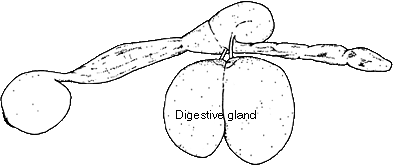
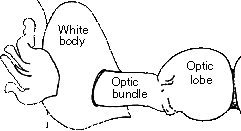
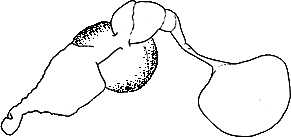
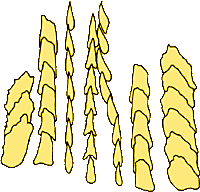
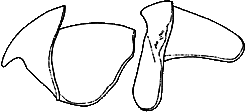
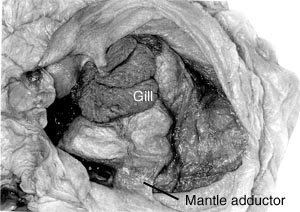
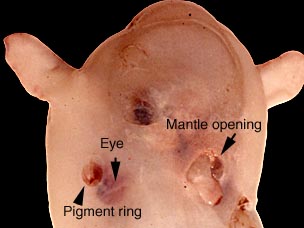



 Go to quick links
Go to quick search
Go to navigation for this section of the ToL site
Go to detailed links for the ToL site
Go to quick links
Go to quick search
Go to navigation for this section of the ToL site
Go to detailed links for the ToL site